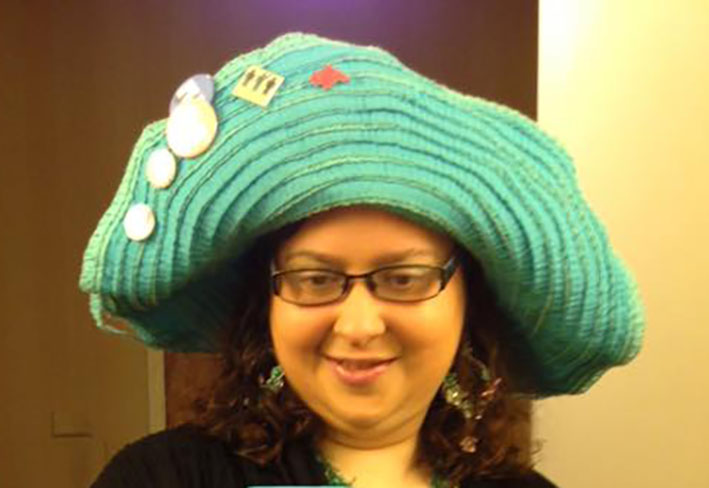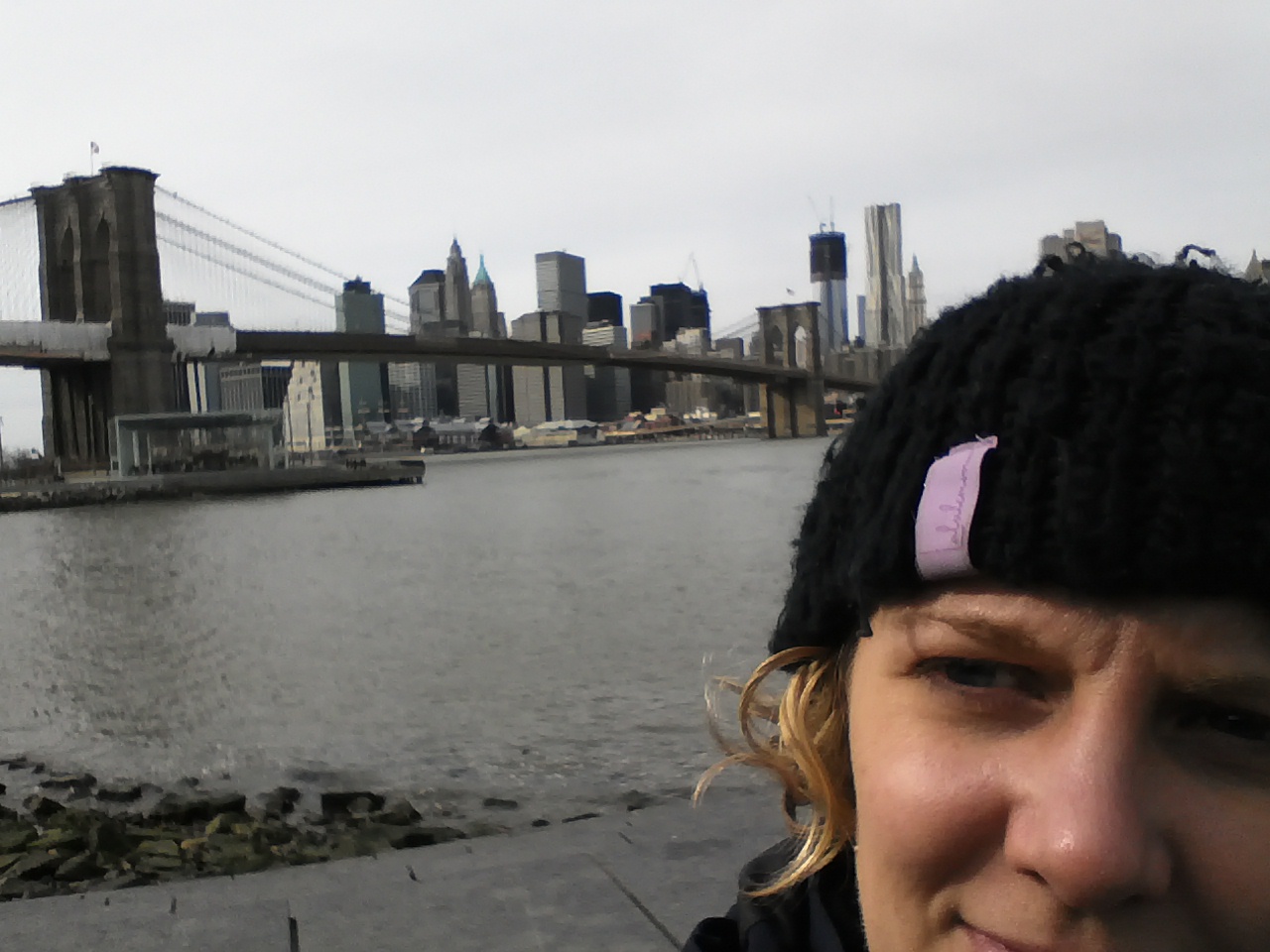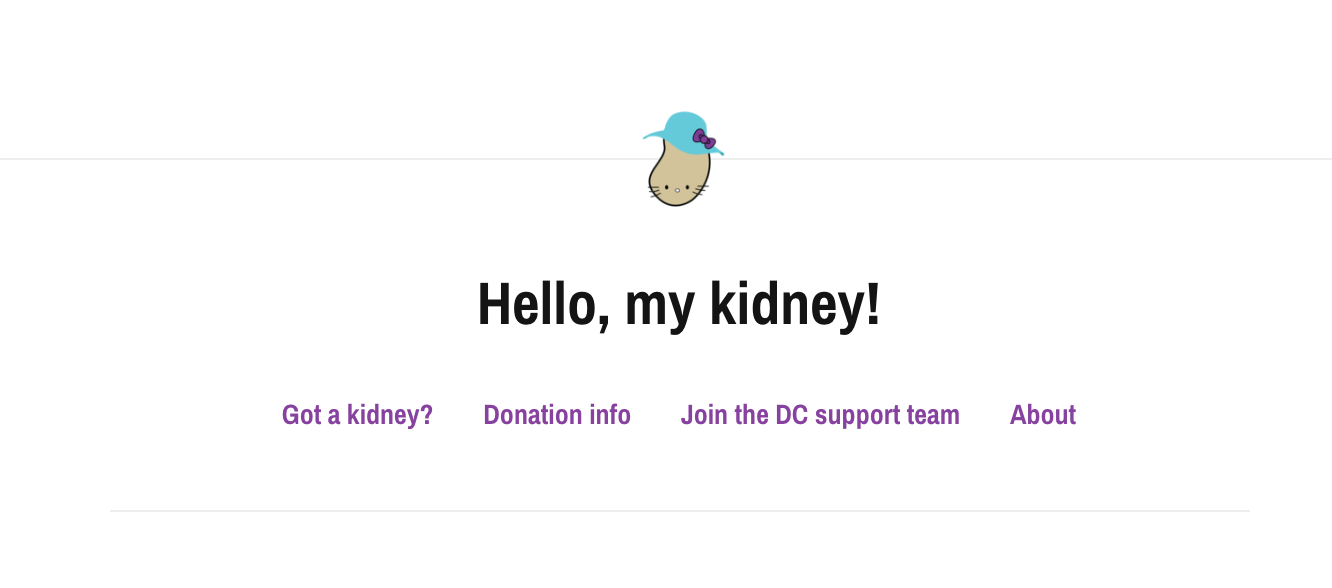Editor’s note: The end of this story has been updated.
In the next few months, Michelle Minkoff and Tiff Fehr plan to meet up in Chicago. They might sit and talk over glasses of water or bowls of chicken broth. They might meet in thin patterned gowns when one of them has the strength to walk down the halls of the hospital toward the other.
Either way, one of Fehr’s kidneys will soon become one of Minkoff’s kidneys.
And when they meet, it will be for the first time.
Minkoff is a Washington, D.C.-based data journalist with The Associated Press. Fehr is assistant editor of interactives at The New York Times. They’re both part of a community of tech and data journalists who call themselves news nerds.
Minkoff didn’t ask Fehr for a kidney — at least not directly. But she did use the tools of her profession to help make it all happen.
Here’s how.
Another new kidney
For half of her life, Minkoff has lived with illness.
At 15, she was diagnosed with IgA Nephropathy, an aggressive autoimmune disease.
By 20, she needed a new kidney.
Her first kidney transplant came from her aunt. Then, about a year ago, Minkoff’s doctor told her that pretty soon, she would need another. Tied up in the anxiety of having to go through it all again, Minkoff also felt some disappointment. Her aunt worked in the World Trade Center and barely escaped on Sept. 11, 2001.
That kidney survived 9/11. But 10 years after the transplant, it wasn’t surviving her body.
Still:
“The 10 years she gave me brought us to this point,” Minkoff wrote on Tumblr. “Many of you I would not have known without her — I wouldn’t have graduated college, gone to Medill, taught at Medill, worked at LA Times, PBS or my intellectual home at the AP, learned to code, known what NICAR is, or met my gym friends.”
Typically, the search for kidney donors starts with family members. Minkoff is an only child. Her father is an only child. One of her mother’s three siblings already donated, but the rest couldn’t because of their own medical issues.
Her blood type is also O negative, narrowing the field to people with O negative or O positive blood types.
So she knew, this time, it was going to be a difficult search.
“And I’m a data journalist, and so I thought, how do you increase the odds?” she said. “You get more people.”
How to hack your own donor search
One weekend last June, a group of journalists gathered at Minkoff’s one-bedroom apartment in her Foggy Bottom neighborhood for a mini-hackathon. The goal: To create a place for Minkoff to find her next kidney.
Emily Chow, design editor at The Washington Post, came. So did Brian Boyer, formerly at NPR, Jacqueline Kazil, formerly of The Washington Post, and NPR’s Sara Peralta. Throughout the weekend, they worked on a Tumblr where Minkoff could tell her story and search for a donor.
And they put their journalistic skills, including collaboration, design and data analysis, to good use. At some point in the process, the question became: What do we use visually?
“How do you make a kidney look cute?” said Chow.

The big blue hat has become part of Michelle Minkoff’s conference look. (Photo courtesy Michelle Minkoff)
She can’t remember just how it happened, but together they had a mind-meld moment and made use of something Minkoff has come to be recognized for — a floppy blue hat.
She first started wearing it after chemotherapy treatments for her autoimmune disease. But she’s short, and the hat’s an easy way for people to find her at conferences, so she kept wearing it. Her friends put an illustrated version of that big blue hat on a kidney, gave it a Hello Kitty-like face and Minkoff soon launched “Hello, my kidney!”
Then, the news nerd community helped her amplify it.
6 in 100 share Michelle's blood type. News nerds assemble! Let's find a donor. https://t.co/h6tZ9ypmn3
— Jeremy Bowers (@jeremybowers) June 30, 2015
Universally compatible
Tiff Fehr checked the box on her driver’s license to be an organ donor. She signed up to be a bone marrow donor. But the first time she really thought about the possibility of being a living donor was after ProPublica’s Mike Tigas became one.
So when she saw the callout on Twitter for people with Minkoff’s blood type, Fehr clicked through the Google spreadsheet and signed up to be tested. She’s O positive, a universally compatible blood type. So, she figured, the odds were pretty good that this could actually happen.
In all, 48 people signed up to be tested. Fourteen were Minkoff’s blood type. Fehr was a good match. But for a year, nothing really happened. Then, last month, Minkoff’s health got worse. She developed a second autoimmune disease that’s attacking her blood vessels. She started getting bruises on her arms, legs and chest. Her red blood cell count dropped. She spent time in and out of the hospital.
It became clear that by the end of the month, one of two things was going to happen: Minkoff was going to go on dialysis or she was going to get a new kidney.
Then, at the end of September, her doctors decided to move forward and bring Fehr to Chicago for more testing to make sure she was a good match.
Fehr emailed Minkoff.
“I hope this week’s tests go well,” Fehr wrote on Sept. 26. She was sill thinking like a journalist. “The timeline of the 20th-27th for surgery and recovery threads the needle for the last prez debate and the general election exactly perfectly, which is amazing. It’s meant to be.”
On Sept. 28, Fehr tweeted an image from the hospital in Chicago.
Oh, hell yes. pic.twitter.com/dcSnabqoU8
— Tiff Fehr (@tiffehr) September 28, 2016
You can crowdsource a kidney?
Last week, Fehr went through a lot of tests in Chicago. She met the medical team that will take one of her kidneys out. She spoke with a medical ethicist and figured out how to get to the hospital’s cafeteria from her room.
The doctors at the University of Illinois Hospital and Health Sciences System were amazed at how Minkoff found her next donor, Fehr said. They didn’t know you could crowdsource a kidney.
In order for the transplant to happen, Minkoff has to stay healthy for the next few weeks. She’s back at work, but she’s feeling cautious. Things can change quickly.
And, though she’s never met her organ donor, the two journalists have mutual friends and acquaintances, including ProPublica’s Derek Willis. Minkoff was a student of his, and he worked with Fehr at the Times.

Tiff Fehr in New York City. (Photo courtesy Tiff Fehr)
At their core, he said, both are generous people in their personal and professional lives.
“Like a lot of folks, I’m signed up to be an organ donor,” Willis said. “But that’s something that’s out of mind, since if it happens I’ll be gone. What Tiff is doing here is much more real and requires not only generosity but sacrifice, which is why I’m not surprised she’d do it.”
“I don’t know what it’s like to be in Michelle’s position,” he added. “But I imagine that I would be more selfish with my time, my activities, my priorities. That she is the exact opposite of that is what makes her extraordinary.”
‘My network is your network’
Minkoff checked with Fehr before sharing the big news this week on Twitter.
“Yep, totally cool to mention the date and me,” Fehr emailed back on Oct. 3. “I don’t mind either way, and you deserve the support and cheers from your network. I’m sure they’re very, very eager to know what’s up and that there’s good news.”
Joyful medical update: @tiffehr is a match for the kidney I need, & we are planning news nerd transplant on Oct 20: https://t.co/91SFANd91H
— Michelle Minkoff (@michelleminkoff) October 3, 2016
“My network is your network,” Minkoff replied a day later. “I mean both that we know the same people, and even those who don’t know you cherish the kindness you are demonstrating and the gift you are making…The outpouring from the community has been amazing, but not as amazing as you are.”
One news nerd giving another news nerd a kidney is surprising but makes sense if you know that community, both women said.
“This is what open source is in some ways,” said Minkoff. “We compete on stories but not the tech, not the code, and apparently now, not on organs.”
Willis agreed. This whole thing makes sense — for this community of journalists and these two journalists in particular. And to him, it’s a great reminder that people still really matter.
“As much as we love our technology, there’s a reason why we love gathering together, there’s a reason why we come to know each other outside of the work we do. It’s things like this that really sort of reinforce that.”
For Chow, it’s a bit of a stretch to say this all makes sense, she said, “maybe I’m just too literal.” But it’s still beautiful. There’s something wonderful about their community and how they give back to each other, she said, in every shape and form.
Neither Fehr nor Minkoff is sure exactly when or how they’ll first meet in person or, if it has to happen after the kidney transplant, how they’ll be feeling at the time. Minkoff knows from experience that she’ll be in recovery in a very restricted, germ-free room. Fehr expects to be pretty out of it for a few days.
So maybe they won’t get to meet right away, even once one of Fehr’s kidneys becomes one of Minkoff’s kidneys. But Minkoff has a perfectly news nerd backup plan.
“You know,” she said, “maybe we’ll Google Hangout from hospital room to hospital room.”
The programming kidney
After a medical delay, on a very early December morning in Chicago, Minkoff and Fehr finally met at the anthensia clinic on the day of the transplant.
“I walk in groggy as hell, and Michelle and her family are sitting right there,” Fehr said.
They talked until their names were called and kept talking to each other through a curtain while they were prepped for surgery.
For Fehr, the surgery felt like someone turned out the light, and when it went back on, she was down a kidney. Her mouth felt like it was full of cotton, and when she checked to see the spot where the surgery took place, she could see the incisions through a purple, rubber cement-like surgical glue. Minkoff woke up groggy and in pain, but grateful, she said. She still managed to share updates with IVs in each hand.
After she was discharged, Fehr stopped by to see Minkoff. At first, the two checked in every day on Slack or Twitter. Now, they talk about once a week.
“I like to give her updates on what her kidney’s eating, what exercises we’re doing,” Minkoff said.
Fehr went back to work in January. Minkoff, who’s still in Chicago, will head back to D.C. and work in late February or early March. She didn’t realize how sick she’d become or how awful she felt. Now, she’s excited to get back to work and life.
The two news nerds joke, too, about what Fehr’s kindey might add to Minkoff’s skill set, Fehr said.
“If it can help out with some programming chops for AP work, I’m happy to lend some.”







